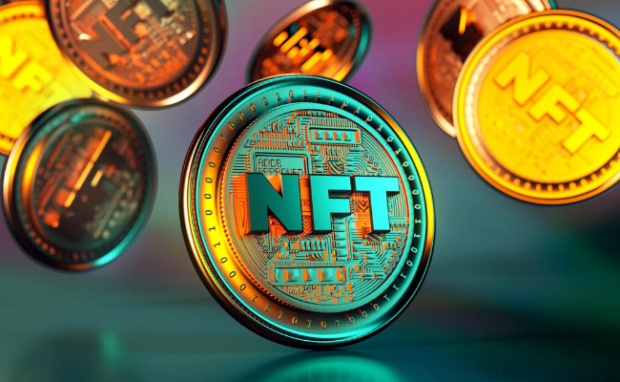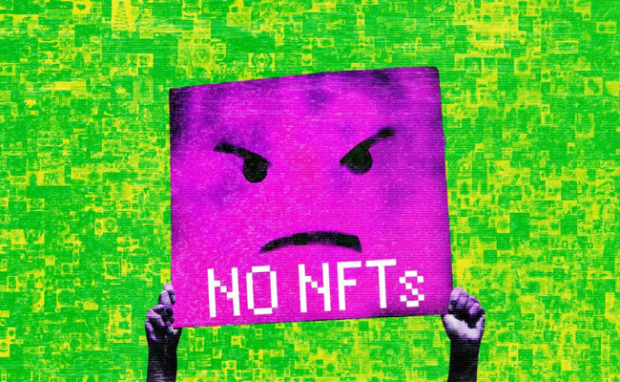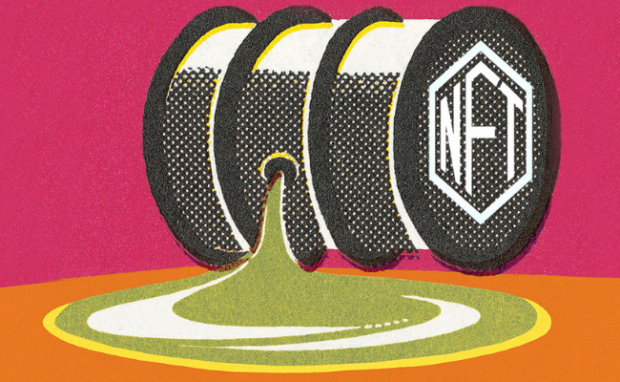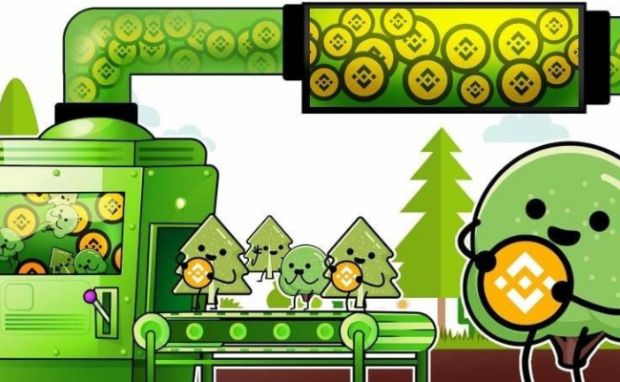NFT Environmental Impact – Everything You Need to Know
Artists have sold many non-fungible tokens (digital collectibles), which has shaken the art world and created chances for artists and content creators. It paved the way for mainstream audiences to investigate non-fungible assets. However, the world carries the brunt of the adverse effect of NFTs through carbon emissions.
Making digital artworks requires massive computational power, resulting in greenhouse gas emissions. When an artist uploads his work and taps a button to “mint,” the artist generates a process for mining. This requires complicated problems, processing power, and enormous energy.
The preferred platform for NFTs, Ethereum transactions, uses a process known as proof of work. Independent studies have shown that to produce a typical NFT, a large impact of more than 200kg of global warming carbon is produced. This equals gas emissions from a gasoline-powered car driven about 500 kilometers.
What are NFTs?

Photo Credit: usatoday.com
In comprehendible words, NFTs (Non-Fungible Tokens) are unique and cannot be changed for something else. A non-fungible token is a non-transferable data unit held on a blockchain, a digital ledger.
The Motley Fool describes it as “a unique digital asset that is not directly replaceable with another digital asset.” NFT data units can be associated with digital assets such as images, movies, and audio. Each token is uniquely identified and can be altered when traded for a different token.
Nowadays, NFTs are well-known as a digital art form. They have been a boon for some but a bane for others. For example, Getty Images sold NFTs back then. Unfortunately, people have become aware of its environmental impact.
Why do artists hate NFTs?

Photo Credit: postergrind.com
Groups of artists on social media are going through a rough patch. This is due to non-fungible tokens causing a catastrophe in the online world. Some social media users are wary and skeptical and have chosen to lock their accounts and block unknown accounts to lose their hard-earned sweat.
If you want to share your lovely work on social media, making it available to the public is easy. This is great for the ecosystem and everyone. If many people love your work, they will show your support by sharing their work or giving out money from their pockets.
NFTs are ruining a good, age-old tradition. Artists now sell and buy NFTs and content providers to extend art collections. It is impossible to claim ownership of a piece of art. It is impossible because anybody can get their version as JPEG or PNG.
You may also like: Kandama NFTs Promote Ifugao Weaves
However, the plan is that if your purchase brings you into the Ethereum blockchain ledger, you will have something to say that the piece of art belongs to you.
The environmental impact of NFTs is gradually becoming more popular, especially with people willing to conserve the earth. Aside from the ambiguity of owning a piece of media that anyone else can access through other means, the issue is that every NFT transaction consumes massive energy.
A French artist, Joanie Lemercier, decided that selling a single piece of art through NFTs equals two years’ electricity consumption in his studio.
How do cryptocurrencies hurt the environment?

Photo Credit: adweek.com
Digital currencies are difficult to mine, requiring huge processing power. This is so nobody gains control over the entire network as an individual or organization.
After all, cryptocurrencies are decentralized and have no single point of control. Cryptocurrencies such as Bitcoin, Ethereum, and Doge use a proof of work (PoW) method.
This requires interested individuals to solve various difficult equations to mine coins and add new blocks of information to cryptocurrency blockchain technologies. This design fights cyber attacks in which a single individual creates many fake identities to seize control of a large percentage of the network.
The lucky individual with the largest processing power has a huge chance of winning, so many people on the network compete to be the first to solve these difficult equations and win money.
This has made many people acquire large mining rigs or chains of mining rigs to make solving equations faster. There is always an increase in the quantity of energy whenever there is a surge in mining a new coin.
After all, energy consumption is directly proportional to the size of the mining networks, Mining is not just the only thing consuming a lot of energy. A single digital currency transaction typically consumes more than 2000 kW hours of electricity.
This is the amount of power capable of powering a typical US household for about 80 days. Energy consumption promotes the production of carbon dioxide and other greenhouse gases.
As a result, these digital art pieces could potentially harm our planet. The estimated carbon footprint of power plants supplying such electricity has a huge environmental impact.
What is the future of NFTs?
The main aim of NFTs was to ensure that artists could make some money and have control over their work. The possibilities of NFTs are limitless because NFTs can help ascertain the ownership of a unique asset.
There are already early NFTs as concert tickets, fan club memberships, or software licenses. Unlike our regular buy and sell, NFT provides strong proof of ownership and evidence that will last for eternity.
In times to come, the digital art will have an NFT attached. However, it must be eco-friendly and support carbon credits to prevent contributing to a climate crisis.
Is there an environmentally friendly cryptocurrency?

Photo Credit: theindianwire.com
Elon Musk, the CEO of Tesla, announced that their electric carmaker would seize to accept Bitcoin as payment for vehicles. The sale of this cryptocurrency nosedived from that moment drastically.
Elon Musk felt concerned about the impact of the energy-intensive cryptocurrency on the environment. Many environmentalists agree with Elon Musk that cryptocurrency consumes a lot of energy.
Many alternatives seem to do less harm to the environment. These cryptocurrencies could help the environment and alleviate concerns about cryptocurrency.
You may also like: Hacker Mr. White Hat Returns Stolen Crypto
A digital artist, Memo Akten has created NFTs exclusively on energy-efficient and eco-friendly blockchains, such as those using the Proof-of-Stake consensus algorithm. This is #CleanNFTs, which require less energy than the Ethereum blockchain.
Smaller currencies may appear to have a lesser carbon footprint, generally due to fewer transactions. However, digital assets are more energy-efficient, which implies they have a lower environmental impact.
Ripple (XRP) claims to be environmentally friendly because it does not require mining or proof of work. It has pledged to help the environment by being carbon neutral by 2030. According to TRG Datacenter’s analysis, XRP uses about 0.00011kWh.
Conclusion
To a certain degree, most of the solutions proposed to combat the problem of climate pollution of NFTs are in progress. However, their implementation remains insufficient.
Most artists are the ones clamoring the most for change. Ultimately, artists are the ones pushing the most for change. For example, artists could drop these digital art pieces on eco-friendly marketplaces.
Perhaps they could use renewable energy to reduce their carbon footprint. Follow Inquirer Tech to learn more about cryptocurrencies, smart contracts, blockchain, and other trends.
Frequently asked questions about the environmental impact of NFTs
How much energy do NFTs consume?
The energy consumption of NFTs varies depending on the blockchain network used. Ethereum, a common blockchain for these digital art pieces, has a significant energy footprint due to its proof-of-work mechanism. It consumes a substantial amount of electricity, comparable to the energy consumption of small countries or large cities.
Is there a more environmentally friendly alternative to NFTs?
Some blockchain networks, such as Tezos and Flow, use more energy-efficient consensus mechanisms, such as proof-of-stake, significantly reducing energy consumption. These networks offer alternatives for NFT creation and trading with a lower environmental impact. Also, others may use renewable energy.
Can NFTs become more sustainable in the future?
The NFT industry has the potential to become more sustainable over time. As blockchain technology evolves, ongoing efforts are to transition to more energy-efficient consensus mechanisms. Additionally, increased awareness and responsible practices within the NFT community can contribute to minimizing the environmental impact.